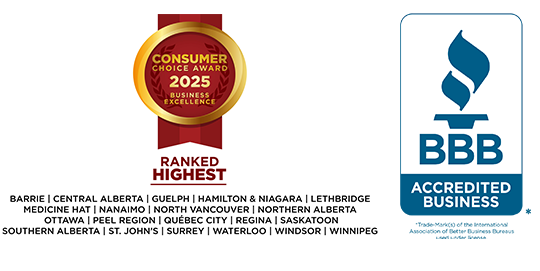Talking Money With Your Kids When To Start And What To Say
2018-02-16
There are many things schools are great at. However, one area that rarely gets the attention it deserves is financial literacy. Which is unfortunate, because generation after generation is entering adulthood without the basic skills they require to navigate the daunting and oftentimes confusing world of budgeting, investing, debt management and saving. Without a clear educational structure in place to teach kids the ABCs of money management, the responsibility falls on parents to fill the gaps.

Just like introducing the alphabet and colour wheel, parents need to be open to talking to their children about budgets. By explaining how to make affordable choices, setting a good example and allowing them to participate in the family's finances, you can help build habits and knowledge that will benefit them for a lifetime.
Here are a few ways you can get started at any age:
Age 3: Introduction to Money
As young as three-years-old, parents can begin talking to their kids about money as a basic concept. You might trace some coins on paper and cut them out. Playing games like "grocery store" or "restaurant", you can begin to familiarize your children with the concept of exchange for goods and services and get them using some of the associated terminology.
Age 4-5: Introduction to Savings
As your child enters pre-school or kindergarten is a fun time to get them excited about real money. You can introduce them to the concept of savings with a piggy bank. The lesson is most effective if the piggy bank is see-through, so they can watch the coins steadily accumulate over time. This instills an ingrained sense of excitement around watching money grow along with the benefits of not spending everything they earn.
This is also a good time to teach your child about coupons. Using a set of safety scissors, you can let them help you cut them out, and when you're at the store you can give them the coupon and have them locate that item.
Age 6-8: First Bank Account
Celebrate a big financial milestone by taking your child to open their first bank account. You can use this opportunity to explain at a high level how banking works – including the difference between savings accounts and chequing accounts and how the money they put away can earn interest. This is also a good time to introduce an allowance. Make a rule that every time you give your child money (weekly, monthly, etc.) a portion must be deposited into their new account.
You might also want to help them become more interested in currency in general. Perhaps you help them start a coin collection or encourage them to play online games and activities like Splash Math.
Age 9-12: Cost and Value
As your child is better able to understand abstract concepts, you can begin to help them understand why different goods and services carry varying costs and values. Encourage them to compare prices and the quality of different products and have them explain why they believe one item is worth more or less than another.
You could also introduce a practical learning challenge by letting them host a yard sale. While supervising, you can put them in charge of negotiating and bartering with their customers.
Age 13-15: Budgeting and Investing
With a growing sense of independence comes more financial responsibility. As your child feels more compelled to spend their money instead of saving it, this is the time to introduce fundamental budgeting principles, including how to balance their chequebook and the difference between needs and wants.
You can also begin introducing your children to the stock market, teaching them basic principles such as buying low and selling high and what different kinds of investments like mutual funds, retirement savings plans, GICs and savings bonds are all about. Tell your child to pick a company they might like to "invest" in. Follow their share price and stay current on news and economic conditions surrounding their industry so they can see and even predict how it will appreciate or depreciate over time.
Age 16+: Credit and Charitable Giving
The best way to prevent your child from falling into the debt trap the moment they reach legal age is to provide some advance training in how and how not to use credit. You might get them a prepaid credit card, so they can get used to spending money without using cash. However, you'll want to pair this with some background on compound interest and by demonstrating the lifetime cost of a purchase if the balance isn't paid off immediately.
Finally, this is also a great time to get your children interested in giving back to their community. Have them do some research and pick a charity that interests them. Encourage them to give a portion of their money away and describe to you how it makes them feel.
MNP provides Life Changing Debt Solutions to Canadians struggling financially. However, we would prefer to never have to help your child get a financial fresh start. By teaching them these money management concepts from an early age, you can give them the opportunity to learn, grow and make mistakes in a fun, safe and exciting way.

